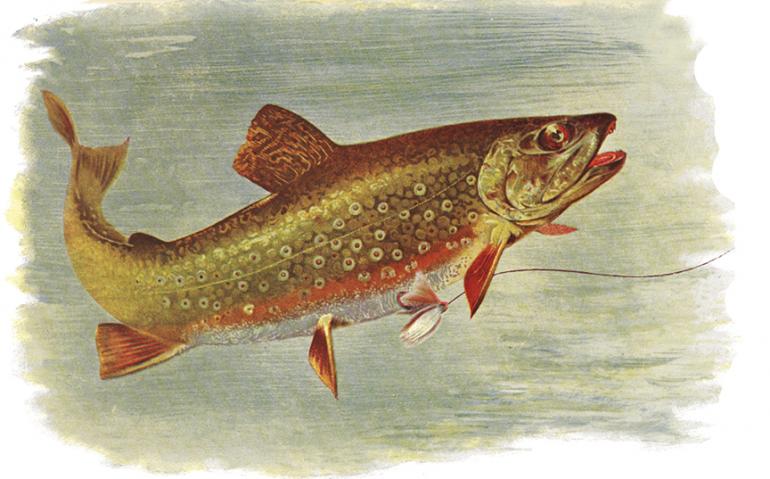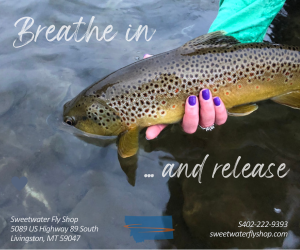Head or Gut?
The fine art of the foul-hook
“There’s one!” I say with the strained sort of exhale one uses to indicate a fish on the end of the line is bigger than it actually is.
“Another? Seriously?” asks my friend Dave, a novice-enough angler to think three catches in one day is impressive.
He walks over to where I'm standing, knee-deep in a rocky bend of the Gallatin River just west of Belgrade. This is easily my biggest catch of the day. It has to be a 16-inch brown, at least.
I lean back hard, watching the green flyline as it curves beneath the arched crescent of my rod, then straight into the swirling foam. The leviathan beneath struggles against my calm and steady retrieval, thrashing about like a soggy old boot.
Wait. A boot?
A wimpy whitefish flops cross-eyed on the bank in front of us.
Impossible, I think, humiliated at my pompous display of masculinity, even if it was only in front of Dave. The kicker is realizing exactly how I was fooled, through a time-honored practice I normally find quite satisfying: the foul-hook. My fly is buried in the soft flesh of the fish’s belly.
Foul-hooking has been a part of my fly-fishing toolkit since I snagged my dad's ear when I was 14. It’s a skill only the most humble of fishermen will tout—the ability to randomly dig a fly into the side, back, or tail of unsuspecting prey. Of course, it’s not entirely random. Foul-hooking normally occurs in the split-second after a strike, as the dumbfounded angler sets the hook too late. Imagine a slow-motion action sequence as the fish recognizes the taste of steel and feathers just in the nick of time. He spits the fly out in a graceful back somersault only to catch the leader underneath a pectoral fin and get a hook in the gut.
Got ya, buddy.
For those looking to improve their chances of a happenstance side-snag, tie on a dropper. This extra fly tied a foot or so past the end of a nymph or big dry fly can work wonders. If your delayed sensibilities prevent you from setting the hook on time, that second little bugger is flying right behind, claws out. Also, the dropper has the occasional tendency to wrap around a writhing fish already hooked in the mouth and set itself. Some folks refer to the dropper as “the insurance policy.”
Purists may view the foul-hook as an impure catch—that it is somehow more “legitimate” if the angler fools a fish into taking the fly and embeds the hook in the unlucky creature’s mouth as proof of the enduring trickery of man. I prefer to see the foul-hook as a lucky reminder that cosmic chance sometimes works in our favor and that a small fish can feel like a lunker if you're dragging it in sideways.
Dave’s brow furrows as he says, “You mean you didn’t catch it in the mouth? Is that supposed to happen?”
“Only if you’re lucky,” I say as I crouch down to release the unfortunate fish.
Pulling my fly from the twitching belly of my catch, I see Dave has already gone back to fishing. Whatever notions he had of my brilliance seem to have been replaced by disappointment.
Even the novelty of a foul-hook seems kind of lame when you do it to a whitefish.











